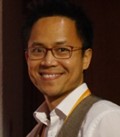15-18 September 2024, Florence, Italy
My name is Aung Win Tin. I am a consultant clinical oncologist at The James Cook Cancer Institute, Middlesbrough, UK. I chose to attend this course for an up-to-date overview of the management of head and neck cancer and to have the opportunity to learn from world-renowned experts. This was my first ESTRO course, and from my experience, I will certainly look to attend more ESTRO courses in the future.
The course was, as promised, multidisciplinary and interactive, and discussed state-of-the-art developments in the field. It was comprehensive and thoroughly enjoyable. Each day was concluded with interesting case discussions. I arrived with a list of questions for the experts and there was ample opportunity to get through them. The multidisciplinary faculty were engaging and generous in sharing their insights and experiences. There was plenty of time to learn from and network with enthusiastic colleagues from around the world during the social events, lunches and coffee breaks.
There was a pre-course radiotherapy planning exercise that involved contouring a case of oropharyngeal squamous cell carcinoma through the use of the 5+5 technique and with consideration of organs at risk. The Educase software used for this exercise was easily accessible and user-friendly. In the delineation workshop on day 3, there was enough time for discussion and group feedback on the contours. After the course, the exercise was available for direct comparison of delegate and author volumes, which enabled further practice and feedback. This has increased my confidence to use the 5+5 technique more widely in clinical practice (i.e., to apply it as long as optimal imaging, pathological processing and clinical examination have been completed).
For me, three important takeaways from the course are:
- for laryngeal cancers which are transglottic or with subglottic extension, while level VIb should be included in the elective volume, VIa is not required;
- for parotid tumours with perineural invasion, an elective dose to the nerve course of ~50Gy is recommended, but the use of a high dose of ~64-66Gy can be limited to the involved part of the nerve + 5mm along the nerve; and
- if we all adopt international consensus outlining guidelines, such as 5+5 and forthcoming post-operative oral cavity delineation, then through shared practice we will learn faster together about what is truly the optimal therapeutic ratio.
I would highly recommend the ESTRO head and neck course to other medical specialists and upcoming trainees who are involved in the treatment of patients with this cancer.


The Arno River: Photo taken on a pre-course morning stroll from Ponte S. Niccolo just outside the course venue

Dr Aung Win Tin
Consultant clinical oncologist
The James Cook Cancer Institute
The James Cook University Hospital
Middlesbrough, UK
aungwintin@doctors.org.uk